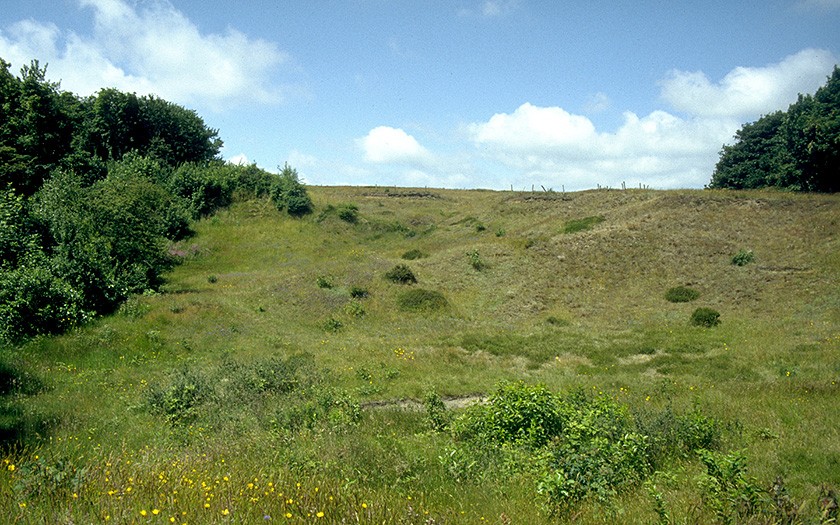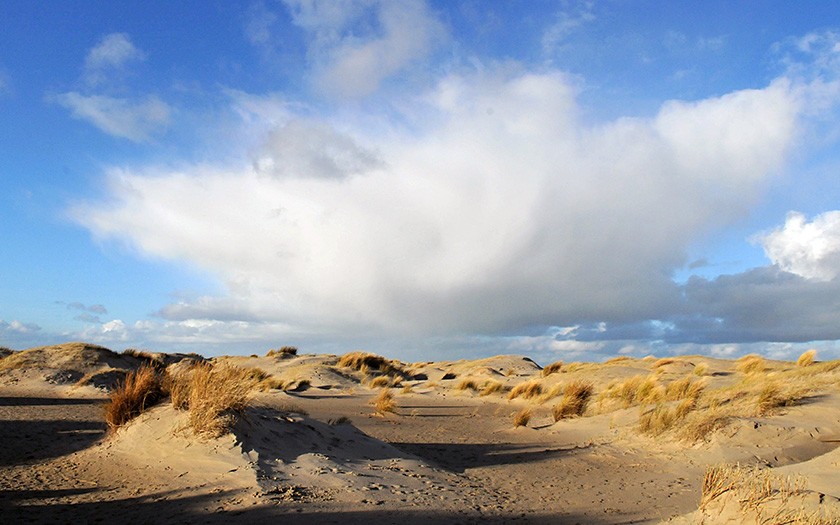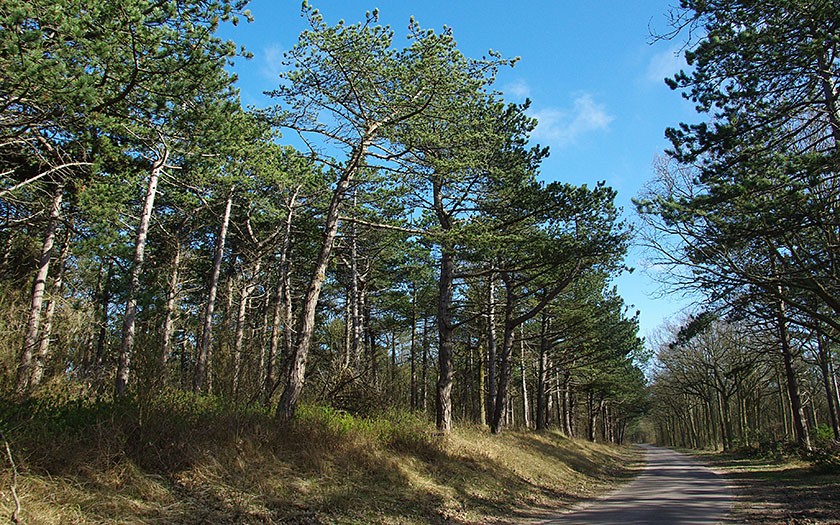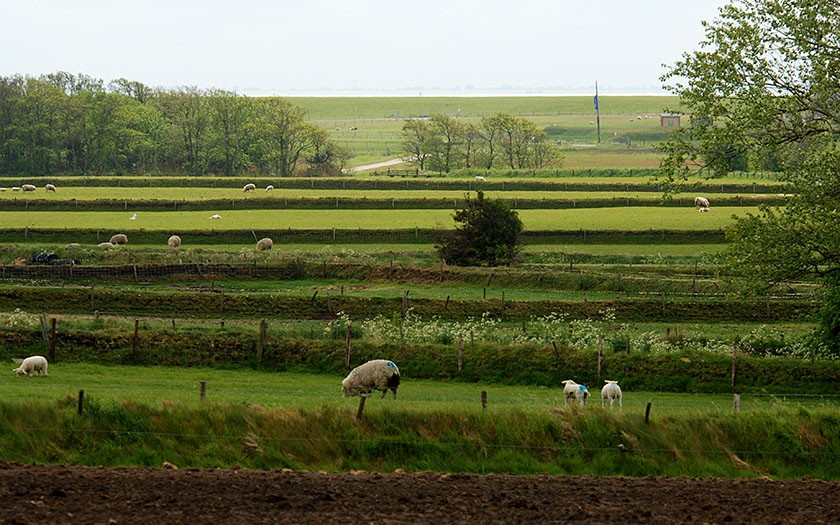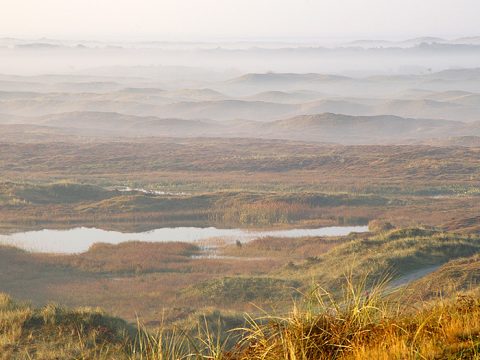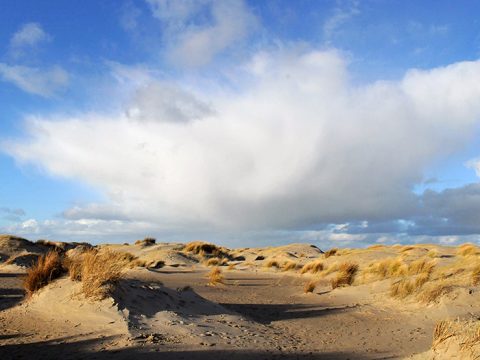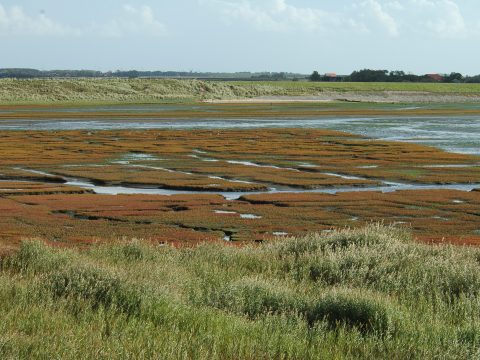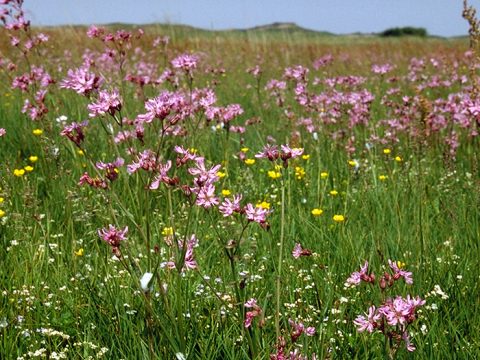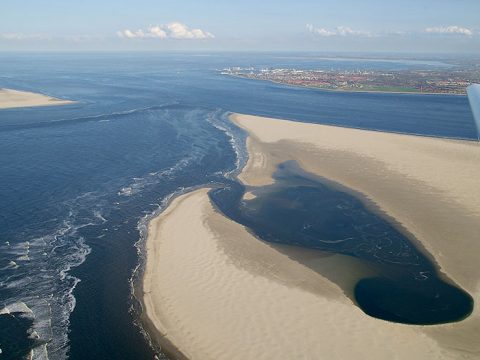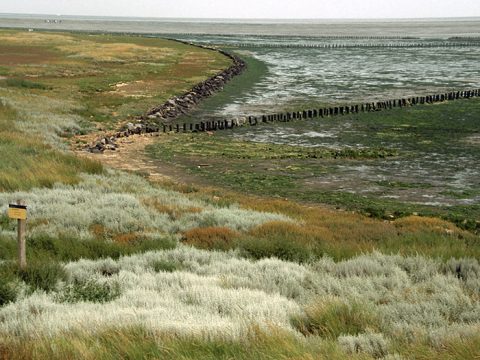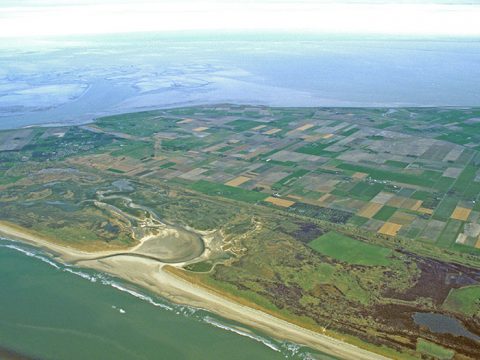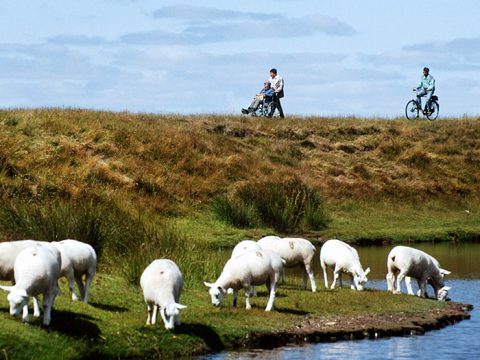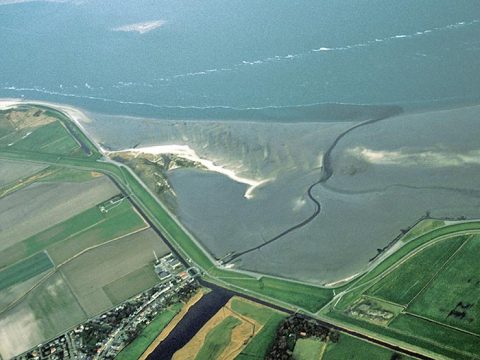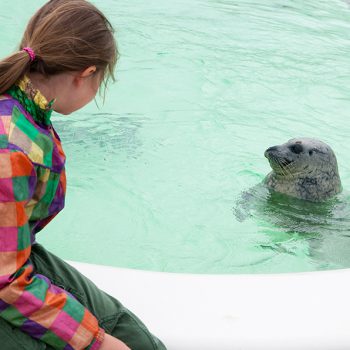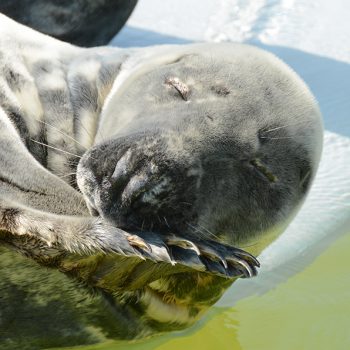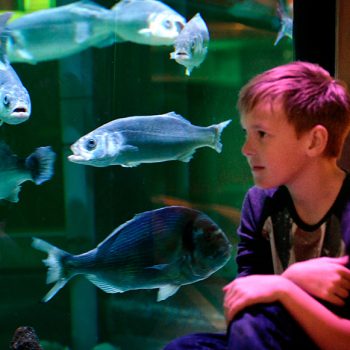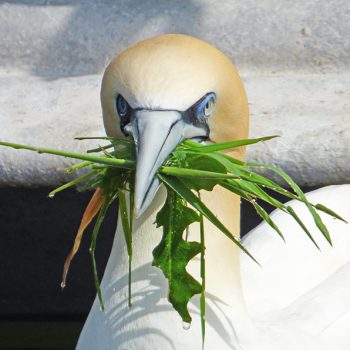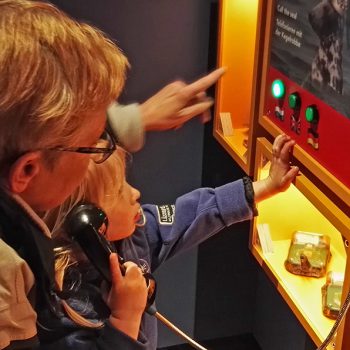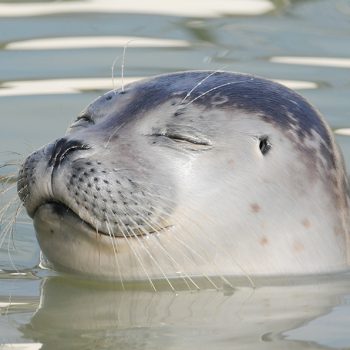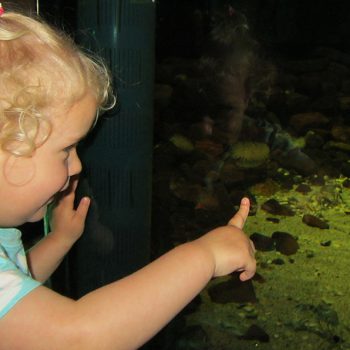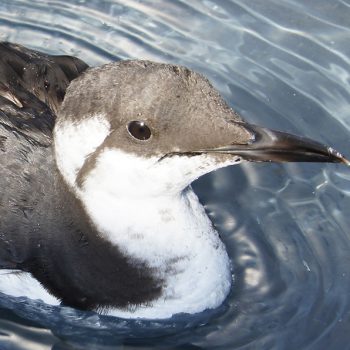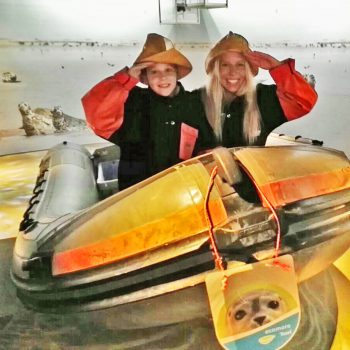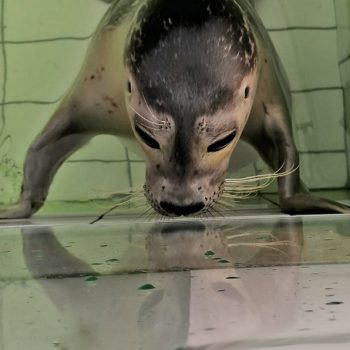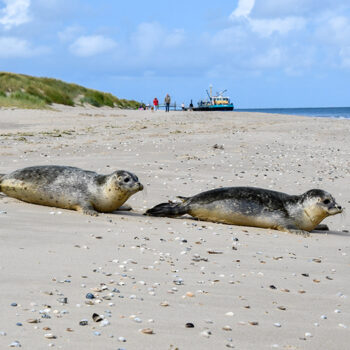Texel
Texel is the largest Dutch Wadden Island, with the greatest number of visitors by far. Texel is especially famous as a bird island, although the nature has more to offer than just birds! Around one third of the surface area on Texel is a nature reserve. And even outside the nature areas, on the cultivated lands, many unusual plants and animals are found. New species are reported almost every year.
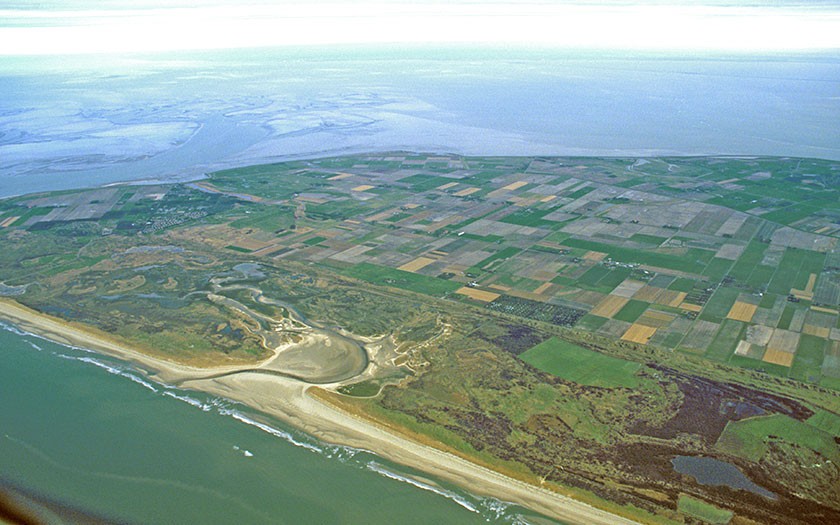
Texel’s nature areas
You find lots of different kinds of nature areas on Texel: sandy plains such as the Hors and the Razende Bol (the name the Texelaars use for Noorderhaaks), salt marshes and tidal flats found in the Mok Bay and on the Schorren, dunes such as the Geul, the Bollekamer and the Muy, and old marsh creeks and meadow bird reserves in the polder, such as Waal and Burg. All of the dunes and woods on the western side of the island is National Park.
The North Sea by Texel
The Netherlands’ largest nature area, the North Sea, borders the western coast of Texel. You only see a part of it from the beach. Particularly during storms, seabirds fly close to the beach. It’s not unusual to see seals swimming and sometimes even a porpoise. Washed up articles on the beach aren’t only shells but also seaweed, crabs, jellyfish and occasionally a spectacular stranding of marine animals, such as whales.
Wadden (mud flats) around Texel
You find mud flats on Texel in the Mok Bay and seaward of the dike north of the village Oost. The Mok Bay is very suitable for bird-watching from the dike. The flats between Texel and Vlieland are relatively undisturbed and attract many seals and wading birds. During low tide, you can’t walk to Texel from the mainland. However, it is possible to walk over the flats between Texel and Vlieland, although you have to make such a large detour that you need two low-tide periods to make the crossing. You have to wait in a shallow area during high tide till the water has retracted. Only highly experienced mudflat hikers can perform this adventure! It is possible to make short excursions onto the flats from the Krassekeet (near Oost) and near the dike monument in de Cocksdorp. It is forbidden (and dangerous) to go onto the flats with groups without a license.
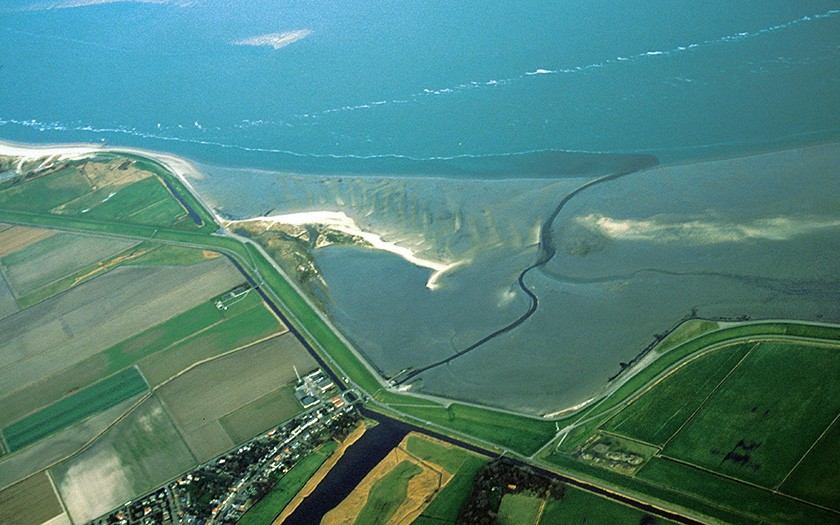
Salt marshes around Texel
Salt marshes are land usually located on the seaside of the dike. They only flood with seawater during extremely high floods. Plants resistant to a salty bath grow here, and they are very unusual plants. They have strange but lovely colors: purple, very light green, and bright red in the autumn. The largest marshes on the island are the Schorren, located along the wadden dike north of Oosterend, and the Slufter, located in an open dune slack on the North Sea side. The Slufter is unique because it is located on the landside of the sea dike. Smaller salt marshes lie along the edge of the Mok Bay, close to the TESO harbor, and north of De Cocksdorp.
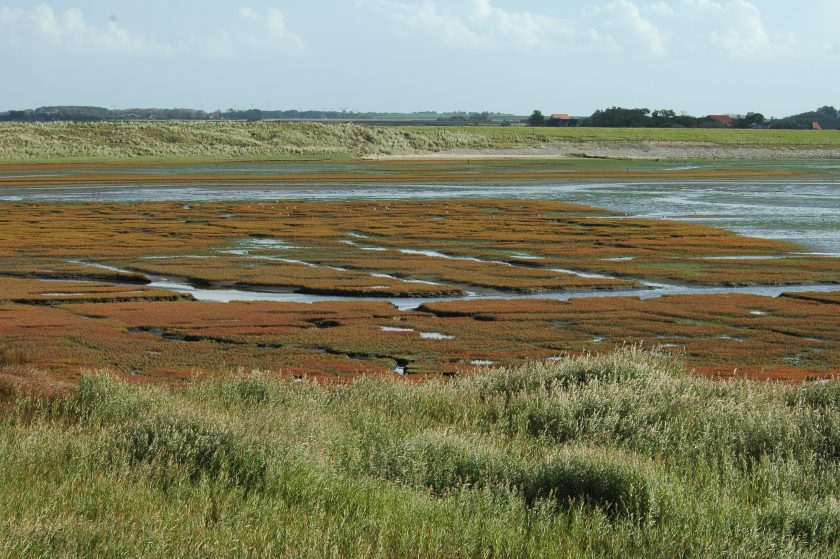
The Texel dunes
The dunes on Texel can be divided into four different sections. From north to south, you have the old Eierlandse Dunes, the young dunes between De Koog and the Slufter, the old dunes between De Koog and Den Hoorn and the young dunes by the Hors.
The Eierland dunes in the north are old and contain very little calcium. There is a large variation in wet and dry dune grasslands and small woods, well known for the unusual migration birds that forage here. The area is also rich in moss and lichens.
In the 16th century, there was a sea channel where the Slufter and Muy now lie. That is why the dunes in this area are relatively young. Sand dikes have been constructed, with grasslands rich in birds. The Muy pond, located in the middle of the area, is famous for its spoonbill and cormorant colonies. To the west is the Buitenmuy, a dune slack, where you find unusual plants, including orchids.
The oldest dunes on Texel lie between De Koog and Den Hoorn. They formed up to 1000 years ago. This is where you find the highest dunes, up to 25 meters in elevation. Sea buckthorn grows profusely in the youngest most westerly lying slacks. Lots of heather grows in the sheltered eastern slacks. The dunes further to the east have changed into scanty, sand-blown ‘mient’ grounds. In olden days, poor farmers let their livestock graze there. Since 1900, the area was planted forested with pine trees.
The youngest dune landscape lies southwest of Den Hoorn, formed after sandbars such as the Onrust attached onto Texel in 1900. This led to the formation of the Hors, whereyou can still follow the process of dune formation. The Geul also formed in this period, an impressive dune slack with a large spoonbill colony and many botanic curiosities.
Woods on Texel
Texel has several woody areas, particularly along the inner dune border. The largest woods is called the Dennen. The Dennen was planted in the beginning of the 20th century between Den Hoorn and De Koog, mostly black pines with a scattering of coniferous trees. The purpose was to make the ‘useless’ land profitable by producing wood for the mining industry. Therefore, large sections were drained. The area was much too wet for trees to grow. In some places, the trees protected farmland from the wind-blown dune sand. This was certainly necessary in the vicinity of De Koog. However, salty sea winds and infertile soils prevented the trees from growing well. They grew so slowly that the mining industry had ended before the trees were large enough.
The woods are now particularly important for recreational purposes. You also find forest birds and unusual mushrooms, which you wouldn’t have found on Texel without the woods. There are playgrounds and open nature areas between the wood lots. Two other woody areas are the Krimbos, located outside of De Cocksdorp, and the Doolfhof on the Hoge Berg. The Krimbos was planted around 1970 and the Doolhof dates back to the 18th century.
The Texel lateral moraine
The old land on Texel lies between the Klif in Den Hoorn and the village Oost. It is a rolling landscape. It is a lateral moraine dating back to the next to last glacial period, around 150,000 years ago. Southeast of Den Burg, the moraine is the widest and highest. Its greatest elevation is the Hoge Berg with 15 meters! This part of Texel has the longest history of inhabitancy, since the last glacial period ended 10,000 years ago. Several examples of cultural historical monuments from the past three centuries can be found on this countryside : garden walls (tuinwallen), drinking pools (kolken), sheep sheds (schapenboeten) and old farmhouses (stolpen).
The old polders on Texel
Since the 14th century, the inhabitants of Texel started building dams around the marshy land, beginning in De Koog. Later on, polders were added around the lateral moraine and Den Hoorn. The largest of the old polders is Waal and Burg, reclaimed in 1610. The old polders in the west are covered with drift sand, making it suitable for growing bulbs. The other old polders are used mostly as pastures. Many of these lands are marshy and therefore are too wet for the farmers. However, the conditions for meadow birds are excellent, as seen in Waal and Burg, Dijkmanshuizen and Büttikofers Mieland.
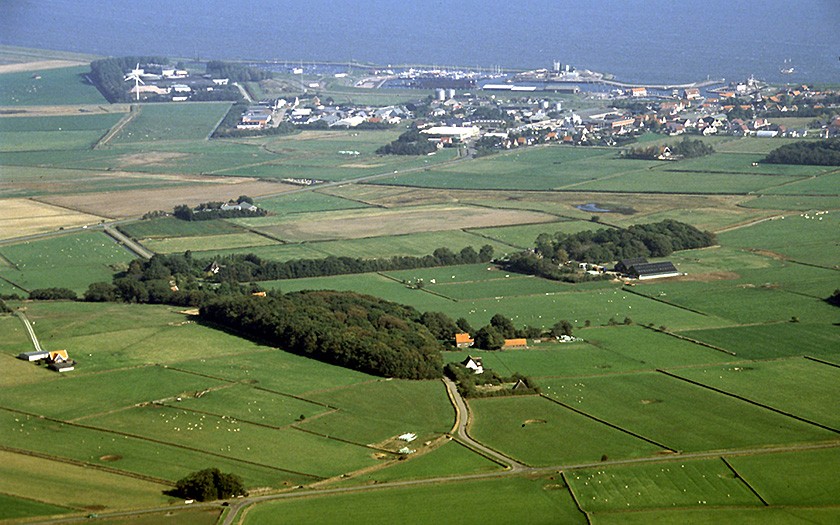
The new polders on Texel
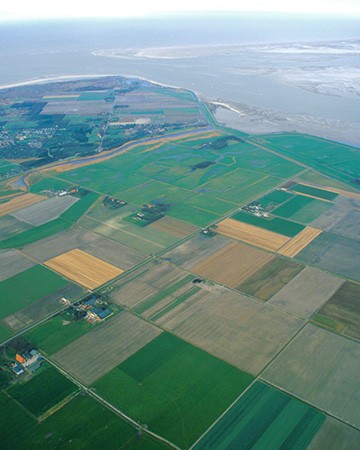
The polders Eijerland, Prins Hendrik, the Eendracht and ‘het Noorden’ were developed in the course of the 19th century and gave Texel its present shape. The land allotments in these young polders are large-scale and rectangular in shape. The farmhouses in the open countryside are often surrounded by wooded groves. Much of the land is used for growing crops. Many geese and Bewick’s swans are found on these polders in the winter. There are several small nature areas here, particularly along the former tidal creeks.
The brackish lands on Texel
On the landside of the wadden dike, there are a number of small nature areas where lots of seawater seeps under the dike. This makes the ground unsuitable for agriculture however is all the more interesting for nature lovers. To name a few examples, the Roggesloot near de Cocksdorp, the fields of orchids by the Bol and an excellent forage and nesting area for terns and avocets in Waagejot, Ottersaat and the Petten.
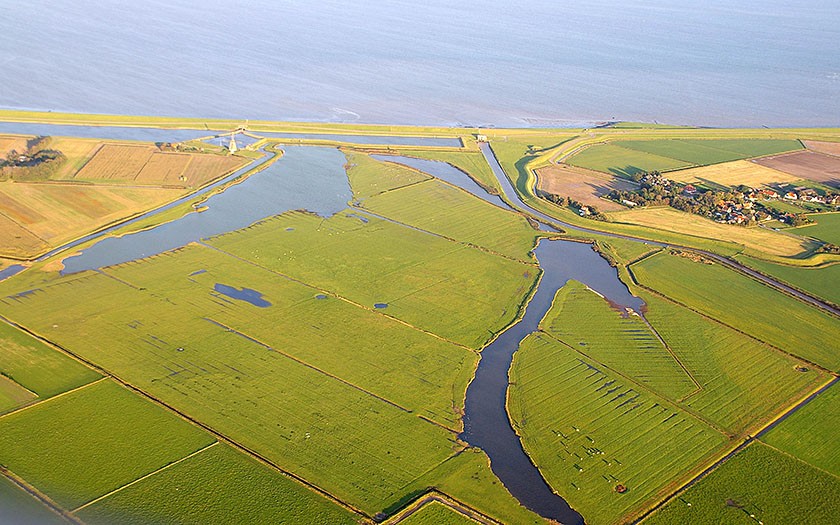
Plants on Texel
Each of the various nature areas on the island accommodates their own characteristic flora. For example, you find the first dune-builders sand couch and sea sandwort on the beach plains. Marram grass, sea holly and sea rocket grow in the beach ridges. Many rare plants such as grass of Parnassus and orchids grow in the young dune slacks. The older dunes are mostly covered with heath, but you also find marsh gentians and sundew. Typical salt marsh vegetation, such as salicornia and sea lavender, grows in the Mok Bay, the Slufter and on the Schorren.
Insects and spiders on Texel
The variation in nature areas also means lots of different species of insects. During an insect inventory on Texel in June 2005, more than 1117 species were reported! There were 543 species of beetles, 279 species of bugs and 424 species of butterflies on Texel. New species were also found during the inventory: four species of cockroaches and ants that had only been found in Limburg (Myrmica gallienii). Furthermore, 81 species of spiders where found. The island has a special insect reservation, the Zandkuil, located on the Hoge Berg. The Zandkuil is famous for several unusual species of solitary wasps and bees.
